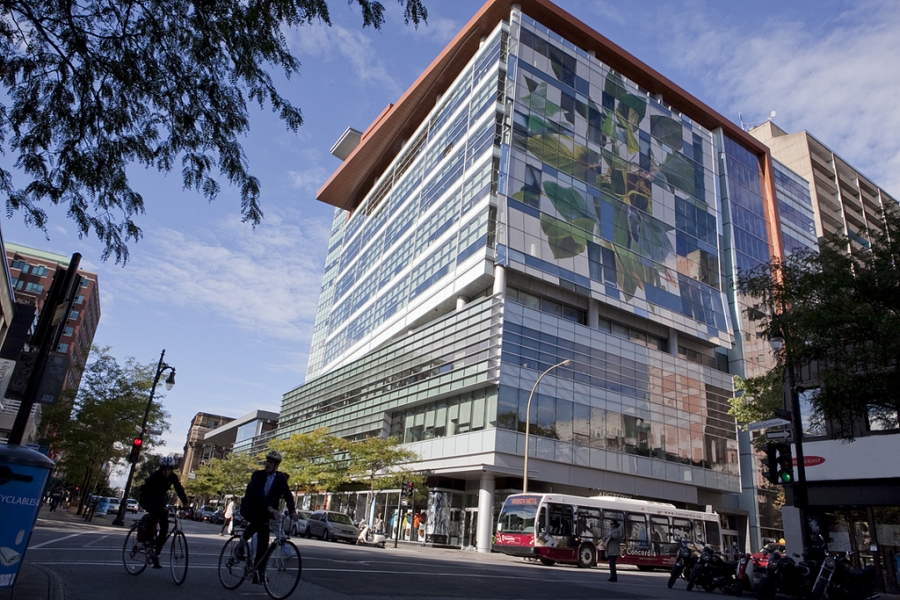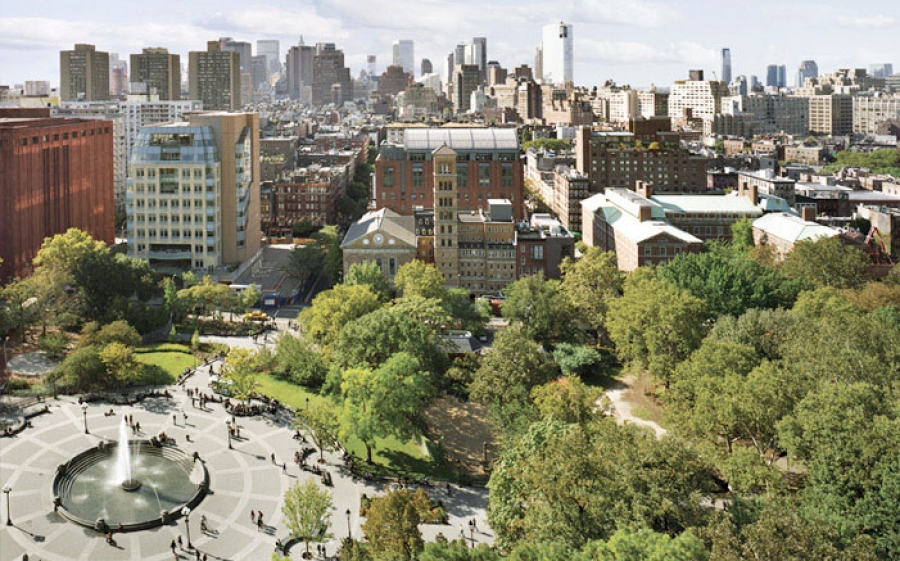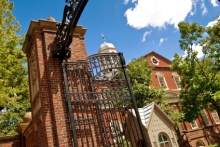Universities and Their Communities: The Town and Gown Relationship
Video
As the well known John Donne poem "Meditation XVII" states, "No man is an island." Neither are colleges and universities. Long gone are the days when an institution of higher learning could operate without considering the surrounding community. University presidents now understand that the success of their institutions depends on the health of their cities and towns. The “town and gown” relationship has not always been a healthy one in many communities, but it has improved significantly in recent years as competition for students and faculty has increased. When these relationships work well, they can have a tremendous impact on the community and university.
 CC license: Concordia University
CC license: Concordia University
An Isolated History
Many U.S. colleges and universities reside in or near city or town centers, and these urban locations were not an issue until the 1950s when downtowns fell into decline. While the nation's urban cores were falling into disrepair, the nature of student residency was shifting. After the Second World War, the GI Bill gave returning veterans the financial means necessary to pursue college degrees. These students were typically older and had families and various other obligations that made on-campus housing less attractive.
Universities were typically isolated from the communities in which they resided; university administrations seemed to see little connection between their academic mission and their communities. The doctrine of In Loco Parentis (Latin for "in place of a parent") was generally accepted until the 1960s. The basis for the doctrine was the idea that institutions of higher education had a responsibility to act in the best interests of their students. The In Loco Parentis doctrine provided university administrators with the impetus to keep students isolated in dormitories so as to keep a closer watch on them and mollify parental concerns. The In Loco Parentis Doctrine was eroded with the Bradshaw v. Rawlings decision in 1980, when the United States Court of Appeals for the Third Circuit ruled that students are regarded as adults and therefore responsible for themselves. The result of this decision was a trend in university administration toward allowing students more autonomy, which promoted their integration into the surrounding communities.
Universities Are Changing as Students and Communities Change
Competition for students has also had a tremendous impact on the way in which universities integrate with their communities. Universities are increasingly in an arms race to attract the best and brightest graduates, which can enhance prestige and justify increased tuitions. Along with GPAs, test scores, faculty, and facilities, universities depend on the vibrancy of their communities to attract students. No longer can colleges and universities ignore the health of the communities in which they reside when it comes to recruiting students. Students and parents want a city or town that is attractive and offers plenty of options for shopping and dining as well as potential employment. Top high school graduates can attend any number of schools across the country, and a record of successful integration with the community is one way in which those educational institutions can distinguish themselves. The perception of the community also now plays a huge role in attracting good faculty and top tier administrators. These highly skilled and sought-after individuals have a huge impact on the prestige of an institution and will generally seek progressive communities with good schools and plenty of dining and shopping options.
A healthy downtown also plays a tremendous role in the quality of student life. In the past, students were isolated on campus with very few outside entertainment or shopping options. This problem is compounded by a restriction many schools have against freshman and sophomores having cars on campus, which has led to dissatisfaction among students of those particular schools, damaging their ability to recruit. Regarding the importance of downtown Delaware, Ohio, to Ohio Wesleyan University, University President Rock Jones has said, “Ohio Wesleyan's campus is embedded in neighborhoods adjacent to downtown Delaware. A dynamic, attractive, vital downtown is critical to our ability to attract students and enriches the experiences of our students while they are at Ohio Wesleyan. Students enjoy the many restaurants, ice cream shops, bookstores, coffee shops, and retail outlets downtown. There is a dynamic energy in downtown Delaware that is magnified greatly when students are on campus.”
Universities Realize They Must Play an Active Role
University administrators have come to realize that they have a role to play in helping to create healthy communities and downtowns. Oberlin College in Oberlin, Ohio, has consistently made the relationship with the community and downtown leaders a priority. Sandra Hodge, Special Assistant for Community and Government Relations for Oberlin College, cited a number of programs and initiatives that the school has undertaken to improve the quality of life in town. Some of these initiatives include a strong work–study relationship with local businesses, a community day when Oberlin College partners with the City of Oberlin and community organizations to tackle various community improvements, and The Oberlin Project, which is a joint initiative of the Clinton Climate Initiative and the U.S. Green Building Council. The Oberlin Project, a planned green redesign of the Oberlin community, is a collaborative effort between the college and the city that has involved more than a dozen community meetings. The city and the college have both greatly benefited from the partnership and have accomplished far more together then they could have on their own.
The health of universities and the communities in which they are located are inseparable. As universities continue to expand their footprint and reach, the relationship with community stakeholders is critical to the success of both. As resources grow scarcer and competition for students and faculty grows stiffer, the partnership between these entities must be strengthened and creative opportunities to improve must be explored.

Jeff Siegler
Jeff attended Ohio Wesleyan University where he received his bachelor's degree in economics management. While working in historic tax credit real estate development In Richmond, Virginia, Jeff completed his Masters of Urban and Regional Planning at Virginia Commonwealth University with a concentration in urban revitalization. Prior to becoming the director of revitalization at Heritage Ohio, he worked as the director of the Lancaster Special Improvement District. Jeff is a graduate of the National Main Street Center Certification Institute; a frequent presenter on local resource based economic development and has participated on resource team visits around the country and internationally.



